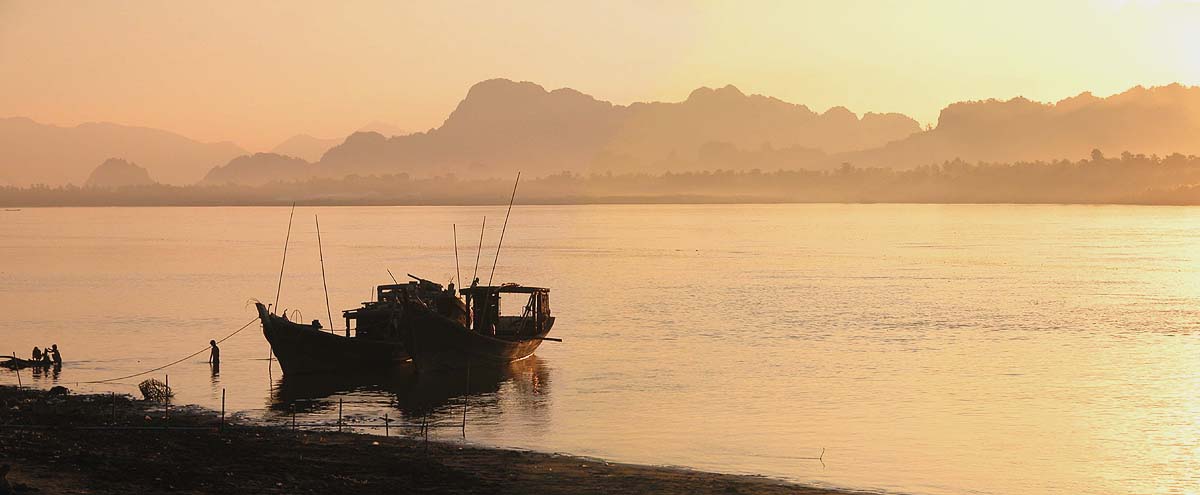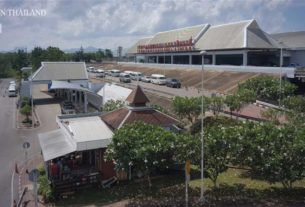 The Myanmar government is trying to focus on generating electricity from cost-effective water resources to meet local demand for electricity.
The Myanmar government is trying to focus on generating electricity from cost-effective water resources to meet local demand for electricity.
The public does not accept the Myitsone dam project as a way to generate hydroelectric power from the Ayeyawady River, nor does it accept coal-fired power projects. When it comes to gas-fired power projects, gas from the existing projects is not enough for domestic consumption as it is being excessively produced for export purposes. Besides, natural gas has a high production cost.
The Thanlwin River, also called the Salween River, is set to become the next victim. But the public does not accept this either.
Countries such as China and Thailand in collusion with local crony firms have built the Mine Ton dam, Hutgyi dam and Kung Long dam on the Thanlwin River. But they face opposition from local organisations as these projects lack transparency, as well as environmental and social impact assessments.
During a press conference held by the electricity and energy ministry, permanent secretary Htein Lwin tried to elicit public support for implementing hydro-power projects in Myanmar so as to meet domestic electricity consumption.
There is one question we need to raise in this context. About 90 per cent of electricity generated from those projects will go to China and Thailand. The ministry must amend these contracts to direct more electric power to Myanmar.
The history of the River Thanlwin
The Thanlwin River runs through Myanmar, China, Tibet and Thailand and creates a basin 271,914 square kilometres in length, on which about 10 million people rely. Myanmar is not the first country to threaten the Thanwlin with hydro-power projects. China has 35 projects under construction and under consideration. China suspended 13 dam projects in Yunnan that would have generated 21,320 megawatts of electricity in 2004. In 2009, the country announced that the 13 projects would be reduced to four. Tibet has 22 dam projects. Myanmar is expected to build between six and nine dam projects, including Kung Long.
The areas along the Thanlwin River are in an earthquake zone. There are about 657 sites that are likely to cause landslides. If the dams in China collapsed, the fate of Myanmar located on the lower reaches of the river would be unspeakable. If Myanmar, for its part, tries to build dams there, who will be responsible? We have to question every government that comes to power every five years.
China controls 53 per cent of the Thanlwin river area, while Myanmar controls 42 per cent and Thailand controls 4 per cent. The river flows from the Gulf of Martaban to the Bay of Bengal by passing through Shan, Kayah, Kayin and Mon states in Myanmar.
Suppose the dams under construction in China and other ones including Kung Long collapse in a possible earthquake, the fate of these four states in Myanmar is unimaginable. According to a survey conducted by International Rivers, about 100,000 local residents have been forced to leave their homes in Shan State, which is being cleared for a dam project. A similar situation might have happened in Kayin State, says the survey.
Myanmar’s dam projects on the Thanlwin River
The 2,820 kilometre long Thanlwin is the 26th longest river in the world. Six dams are proposed to be built in Myanmar. They are the Kung Long, Nong Pha, Mantaung and Tasan or Mine Ton in Shan State; the Ywathit in Kayah State; and the Hutgyi in Kayin State. Those six projects are expected to generate 36,902 to 15,070 megawatts of electricity.
Environmentalists, including geologist and parliamentary representative Saw Moe Myint, have pointed out the lack of transparency in revealing the advantages and disadvantages of these projects to the public, as well as the environmental effects.
Saw Tha Bo from Karen Rivers Watch said the upcoming dam projects on the Thanlwin River in Myanmar will be implemented by Hanergy Holding Company, Hydrochina Corporation, Chiha Three Corporation, China Datang Overseas Investment and Sinohytro from China and EGAT International Co Ltd from Thailand. Asia World and IGE Company the Myanmar partners.
The most serious danger
Botany professor Nyo Maung pointed out a case of danger in addition to the Thanlwin dam projects in a book titled “Environmental Conservation Paper-2”, published by the National League for Democracy.
The move is about digging a canal through which water from the Thanlwin will be transported to the dams in Thailand. The 88 kilometre long canal will carry water into Moe Lama Laung dam on the Yuam River and then into Bhumibol dam on the Chaophraya. The water from the Thanlwin will flow to Bhumibol dam at a rate of 3,000 cubic metres per second, which can produce electricity. The author said the likely impact on areas on the lower reaches of the river is disasterous.
“Transporting water from the Thanlwin to Thailand will affect us alone. There is only 3 per cent fresh water in the world. That amount comes from glaciers. But we will run out of it due to climate change. So we have to maintain our rivers and creeks. Later on, the world will face fresh water shortages. The issue of fresh water is prioritised at a national level,” said Saw Tha Bo from Karen Rivers Watch.
“In the future, the world will face a scarcity of fresh water. As such, we will supply water through pipes or channels. Then salt water will enter in Beelugyun. Due to the salt water, we will face difficulty in agriculture, and we will face a shortage of food. Salt water displaces fresh water. The rural people in 60 villages in Beelugyun and Mawlamyine will encounter shortages of fresh water. Who will solve this problem? The government will gain the profit from this project. The rural people will suffer the environmental impact of the project. In this state, if the people move, they will witness economic and social problems. It is a massive problem,” he continued.
The Thai news organisation Prachachat said it hopes Hatgyi dam will appear and that Thailand will spend 100 million baht on the Hatgyi dam and 200 million baht on the Mongton dam.
Objections
Shan CSOs organised a press conference on the dams to be constructed on Thanlwin River in Bangkok on August 23. The Chinese government is planning to build Naungphar dam on Thanlwin River in Shan State, which would generate 1,200 megawatts. This is a region where the Tatmadaw and ethnic armed groups clash. Ethnic armed groups stationed on the west bank of Thanlwin River, while Wa territory is located on the east bank.
The statement said that SMEC of Australia is secretly carrying out an EIA for Naungphar dam amid armed conflict. The local people protested against the plan to build Mongtong dam in Shan State, leading to its suspension.
“At the present time, when the people are concentrating on the Myitson project, the government is secretly selling the parts of Thanlwin River instead. We are very worried about the substitution of the Thanlwin dams for the Myitson dam,” activist Sai Khay Saing said.
Ninety per cent of the total generation of power from these dams will be sold to China and Thailand. As a result, 26 Shan state-based CSOs sent an open letter to Aung San Suu Kyi, the state counsellor.
Forty-five per cent of power generated by the Mongton dam will be sold to Thailand, while another 45 per cent will be sold to China. The remaining 10 per cent will be distributed to Bago Region and Shan State, though the breakdown is yet unknown.
“The Kyaingtaung hydropower project cannot fully supply power to all the townships in Shan State. By looking this, we do not believe the dams on the Thanlwin River will supply power to the local people,” said Nan Nun Moe representing 26 CSOs in Shan State that sent an open letter to Aung San Suu Kyi.
The CSSU issued a statement on August 29 saying it will join hands with the people, CSOs and environmental organisations to protest against the construction of dams on Thanlwin River. The CSSU is comprised of Shan ethnic armed groups and political parties.
The government should consider these six points: the likelihood of earthquakes in the area should be studied; the impact on environment, social affairs and health should be reviewed; armed conflicts should be assessed after stopping the dam projects; Thanlwin dam projects should be assessed as to whether they are in conformity with international standards; all the facts about the Thanlwin dam project should be made known to the public; and development programmes should be implemented.
Thanlwin River is jointly owned by Myanmar and China. China has a plan to carry out 35 hydropower projects. Myanmar’s power consumption has risen to 15 per cent. Myanmar will need 4,531 megawatts of power until 2020. Existing power plants can generate 5,235 megawatts of power. The government distributed 2,500 megawatts up to the early part of 2016. Sixty-six per cent of households in the country cannot access electricity. To fulfil the demand of all households, Myanmar needs to triple its efforts.
“The Thanlwin River is owned by Myanmar and China. We need to assess the dam projects to determine whether they are beneficial to us or not. We are required to consult experts to enable the country to see benefits. Useless projects should be stopped. The Myitson dam project was suspended because all the people saw it useless for the country,” said Dr Min Nyo of Myanmar Renewable Energy Association.
Source: http://www.elevenmyanmar.com/opinion/5856




